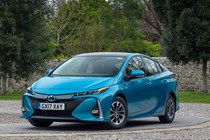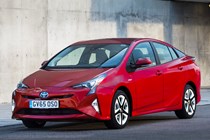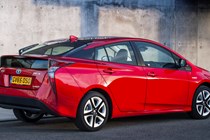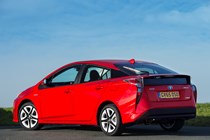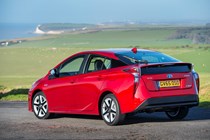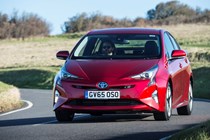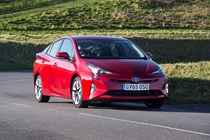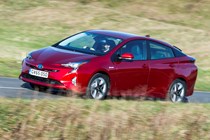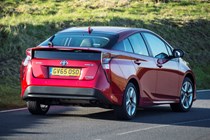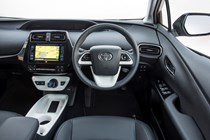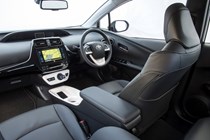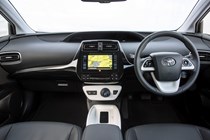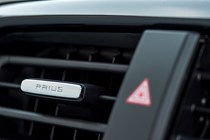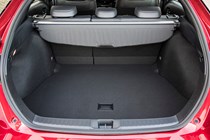
Toyota Prius Hatchback (2015-2022) engines, drive and performance
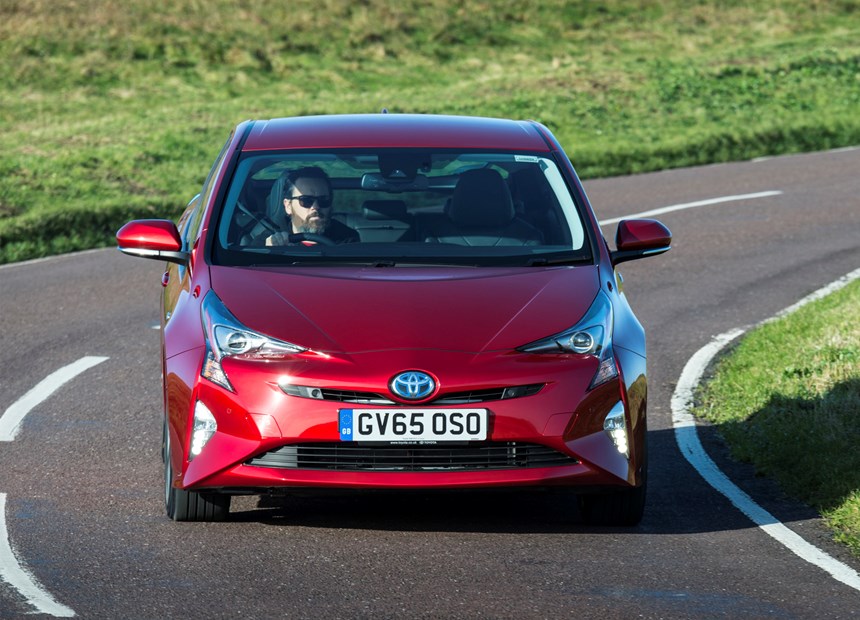
- Hybrid and plug-in hybrid options
- Emissions as low as 22g/km of CO2
- Both accelerate to 62mph in around 11 seconds
Two petrol-electric versions of the Toyota Prius are available; one that can be plugged in to provide up to 39 miles of electric range, and another that solely uses the petrol engine to keep the batteries charged.
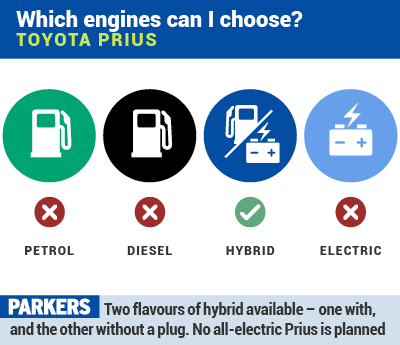
What’s the plug-in Toyota Prius like to drive?
As with the normal Prius, a standard-sized petrol tank means you don’t have to worry about stopping and charging constantly. However, fail to charge regularly and you can expect fuel economy to plummet to around 80mpg or less – worse than you’d get from the standard car – making it an expensive false economy for those who don’t intend to frequently refill the batteries.
Regularly top up, however, and you could boycott petrol stations altogether if you only cover shorter journeys. Chalking up 25 to 30 miles of real-world electric range seems easy enough from our test, meaning that many commuters could simply rely on battery power.
Practicality, meanwhile, has been sacrificed, with just four seats and a shallower 360-litre boot, down from 502 – courtesy of the underfloor batteries – and the styling has been tamed somewhat, with more conventional lines than its plugless counterpart.
How does the Prius Plug-in perform?
With full batteries and EV – electric vehicle – mode selected the Prius Plug-in feels surprisingly quick off the mark, with a strong response to the throttle. It may not be fast, but charged up this Prius is satisfying to drive around town and can hit up to 84mph on electric power alone.
Economy-boosting EV City mode, meanwhile, reduces maximum power with the engine only called upon under full throttle. Switch to HV – hybrid – mode and the car automatically juggles petrol and electric power. A final Battery Charge option uses the engine to generate electricity to charge the batteries.
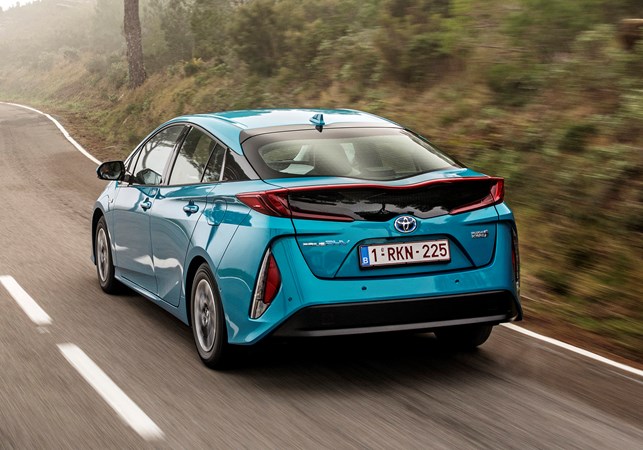
What’s the hybrid Prius like to drive?
Refinement is one major prong of its attack. Under that surprisingly low bonnet nestles a whispering 1.8-litre petrol engine, which joins forces with an electric motor to produce 123hp. While that doesn’t sound impressive in isolation, that fact it does so in such hushed tones, with little mechanical vibration felt through the controls is testament to Toyota’s engineering obsession.
It tops out at 112mph, but thanks to the body’s aerodynamic qualities, it completes the 0-62mph sprint in a not-too-shabby 10.6 seconds. Its 0.24 drag coefficient confirms the Prius cheats the wind with the same athleticism as a bar of soap being used in the bath.
Handling
- Feels more like a conventional car to drive
- Responds best to gentler driver inputs
- Brakes still feel a little grabby initially
Climb aboard the latest generation Toyota Prius and you don’t need long behind the wheel to recognise it handles better than any previous car to wear the nameplate. That’s even true in the Plug-in version despite the extra weight of the additional batteries it carries.
Toyota Prius: surprisingly excellent handling
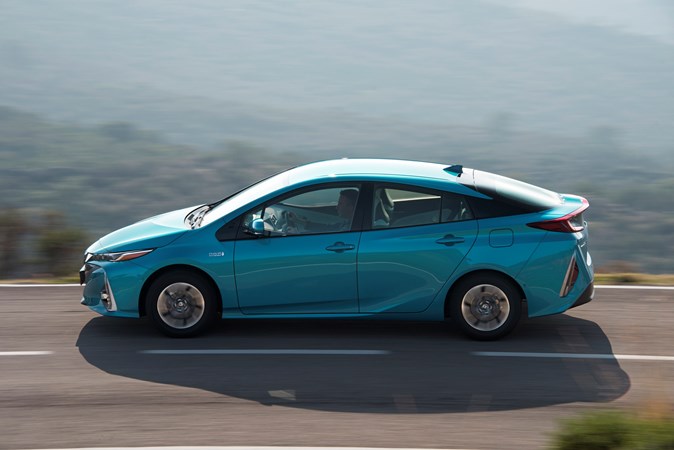
Despite its odd looks, the the Prius feels just like a conventional car to drive, rather than an MPV. Compared with the old model, lowering the centre of gravity by 25mm and making the driver sit 59mm lower than before helps make you feel more in control of the driving experience than previous Priuses, although it doesn’t feel remotely sporty.
Corners can be turned into more accurately but there’s little communication about how much grip the front wheels have through the anaesthetised steering. Press on hard and the on-board stability electronics do their utmost to stop the car pushing wide through a bend. The heavier Plug-in model does a good job of hiding its weight, feeling planted around corners and providing a good sense of confidence for this type of car when taking bends faster.
Braking takes some adjusting to; the first few degrees of pedal travel feel especially grabby, potentially making the experience a little jerky as you acclimatise to their sensitivity. The culprit is the energy recovery system replenishing the battery pack as the brakes are initially applied, a sensation other manufacturers have successfully engineered into history. We didn’t find this a problem in the newer Plug-in hybrids we’ve driven, however, with the pedal proving sufficiently progressive for smooth driving.
Plenty of comfort for the family
Overall, the Prius performs benignly whether in urban environments or chalking up high mileages along motorways where its fine aerodynamic performance aids stability. Buttons on the dashboard next to the stubby gear lever allow the driver to switch between four drive modes in the conventional model. Normal is where most will keep the Prius, providing a sensible blend of throttle responsiveness and fuel economy. Switching to Power emphasises the former, Eco mode the latter.
There’s also an EV setting to turn the engine off completely for brief moments such as when undertaking low-speed manoeuvres. The Plug-in versions feature three other modes in addition to the EV setting: HV hybrid mode, EV City and Battery Charge.
EV mode makes use of the Plug-in model’s potential 30-mile real-world electric range, while EV City reduces maximum power to boost range, hybrid mode juggles between petrol and electric power automatically, and Battery Charge uses the engine to replenish the batteries so you have sufficient electric range at a later stage without plugging in.


